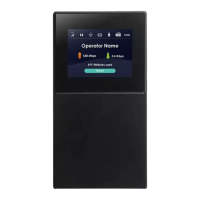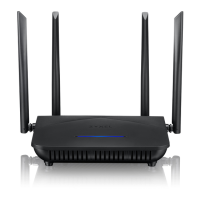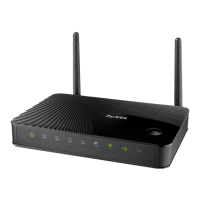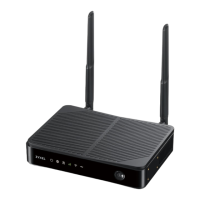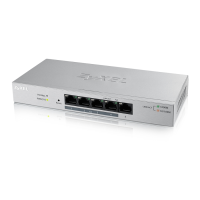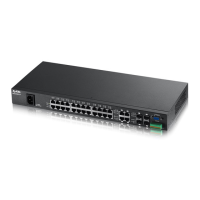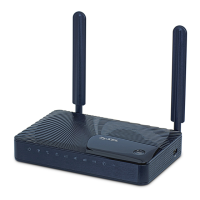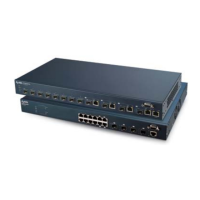Chapter 23 Cellular WAN Status
NR/FWA Outdoor Series User’s Guide
224
Data Roaming This displays if data roaming is enabled on the Zyxel Device.
Data roaming is to use your Zyxel Device in an area which is not covered by your service
provider. Enable roaming to ensure that your Zyxel Device is kept connected to the Internet
when you are traveling outside the geographical coverage area of the network to which you
are registered.
Operator This displays the name of the service provider.
PLMN This displays the PLMN number.
Antenna Status This displays Internal when the INT EXT switch is set to INT. Use the Zyxel Device’s internal antenna
to get cellular signal.
This displays External when the INT EXT switch is set to EXT. Connect external antennas to the
Zyxel Device’s to strengthen the cellular signal. See Section 2.4 on page 33 for more information.
Current Access Technology/Service/SCC Information
# This is the index number of the Secondary Component Carrier (SCC). The Zyxel Device supports
Carrier Aggregation (CA) to use multiple LTE carriers simultaneously for data transmission. CA
consists of a primary component carrier (PCC) and secondary component carriers (SCC). The
PCC is used for control signaling and the SCC is used for increased data throughput.
MCC This shows the Mobile Country Code (MCC). MCC is a unique code that identifies the country
where a Public Land Mobile Network (PLMN) is at.
MNC This shows the Mobile Network Code (MNC). MNC is a unique code that identifies a Public Land
Mobile Network (PLMN) in a country. MCC and MNC combined together are used to identify a
globally unique PLMN.
Access
Technology
This displays the type of the mobile network to which the Zyxel Device is connecting.
Band This displays the current cellular band of your Zyxel Device.
RSSI (dBm) This displays the strength of the WiFi signal between an associated wireless station and an AP.
The normal range is –30 dBm to –79 dBm. If the value drops below –80 dBm, try moving the
associated wireless station closer to the Zyxel Device to get better signal strength.
Cell ID This shows the cell ID, which is a unique number used to identify the Base Transceiver Station to
which the Zyxel Device is connecting.
The value depends on the Current Access Technology:
• For LTE, it is the 28-bit binary number Cell Identity as specified in SIB1 in 3GPP-TS.36.331.
Physical Cell ID This shows the Physical Cell ID (PCI), which are queries and replies between the Zyxel Device and
the mobile network it is connecting to. The normal range is 1 to 504.
UL Bandwidth
(MHz)
This shows the cellular channel bandwidth from the Zyxel Device to the base station. According
to 3GPP specifications, the bandwidths defined by the standard are 1.4, 3, 5, 10, 15, and 20 MHz.
The wider the bandwidth the higher the throughput.
DL Bandwidth
(MHz)
This shows the cellular channel bandwidth from the base station to the Zyxel Device. According
to 3GPP specifications, the bandwidths defined by the standard are 1.4, 3, 5, 10, 15, and 20 MHz.
The wider the bandwidth the higher the throughput.
RFCN This displays the Radio Frequency Channel Number of DL carrier frequency used by the mobile
network to which the Zyxel Device is connecting. The value depends on the current Access
Technology:
• For LTE, it is the EARFCN (E-UTRA Absolute Radio-Frequency Channel Number) as specified in
3GPP-TS.36.101.
• For 5G, it is the NR-ARFCN (New Radio Absolute Radio-Frequency Channel Number).
Table 92 System Monitor > Cellular WAN Status (continued)
LABEL DESCRIPTION
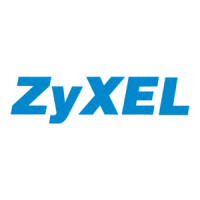
